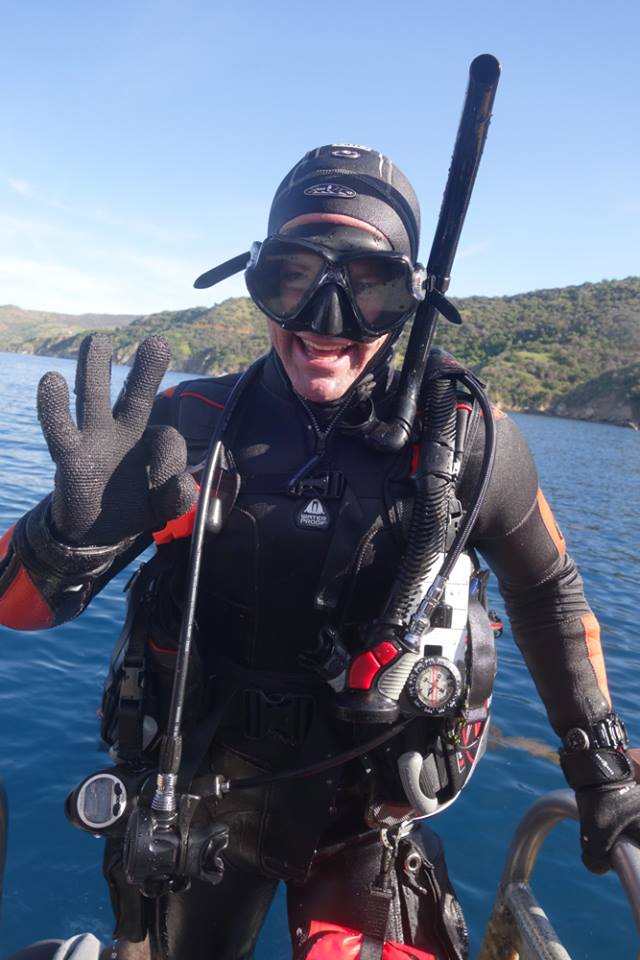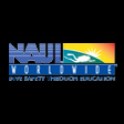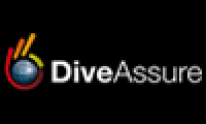
Dan Stephens
Dive Master
Location: Agoura Hills
Hometown: San Diego
Hi, I am Dan Stephens and I started diving with Ocean Safari in 2014, I had already had my Open Water certification from another agency, but was hoping to continue my Advanced certifcation with NAUI. After meeting and talking with Gabe I was hooked. I knew right away this was the place for me. Since then I have taken many classes at Ocean Safari, but more important than anything else, I have made so many friends here. Gabe has challenged me in so many ways and I always have come away a better person/diver than I was before. My true love is writing about my adventures and sharing what I have learned. I look forward to one day having a chance to dive with you. Cheers, Dan
Guide to Santa Barbara Island by Dan S.
October 16, 2018
Dan’s guide to Santa Barbara Island
Santa Barbara Island (MPA) officially one of five channel islands, approximately 1 square mile with its tallest peak at 634 feet, that lies 38 to 40 miles from the California coast. What bring divers to Santa Barbara Island are the pinnipeds. They just love to check out divers and wonder at our bubbles. Have no fear they will not hurt you, just observe them and keep your hands to yourself.
The island is now home to sea lions, elephants seals and seabirds (14 different seabirds nest on the island; these include brown pelicans, cormorants, pigeon guillemots (black with white strip and orange feet) and western gulls which will be nest on the island during our trips in June. Officially the island is not a volcano but it is composed of Miocene volcanic rock which is the result of uplifting of tectonic plates, the canyons have been cut by the ocean and wave erosion. The early American Indians used the island as a stop-over on fishing expeditions since it was abundant with sea life.
It is not easy to dive the island, because of its small size and openness to large pacific swells. Also fog can creep into the island making surface visibility like pea soup, in fact if you had to survive on the island you can set up fog-catchers on the windward side of the island to supply fresh drinking water as the ancient people here did up to 4,000 years ago. When you find yourself at the island consider it a blessing as all conditions have come together just right.
The North part of the island offers some of the best diving found in the Channel Islands. Dive spots here are Arch Point, Landing Cove and Shag Rock. Going to the south the boats pass the Sea lion Rookery and Cat Canyon, if you are on the West side the boat passes Hidden Reef or Arch Reef rounding Webster Point. The very south side has Sutil Island which is really a rock rising 300 feet out of the water.
Dive spot characteristics are:
Hidden Reef: ¾ mile off Webster point. Sandy bottom with rock walls you will see purple hydrocoral, Coryactis anemones(strawberry anemone), lazy bryozoans(small calcium carbonates), nudibranch, lobster, bat rays scorpion fish and lingcod.
The Arch: The 30 ft wide arch is at a depth of 40 ft. It is an amazing underwater structure well within most divers abilities, but keep in mind that it is still an overhead environment and best dove as an advanced diver. Still it offers and amazing backdrop for photography. Lobster are easily found lining the arches walls
Sutil Island: Thick kelp rocky bottom at 50, here you will see lots of kelp bass or calico bass, larger pelagic fish like barracuda, giant black sea bass, electric rays, octopus and tuna. Also keep an eye out for abalone here too. North west of here is a ledge to the rock bottom that drops off to deep water, the wall and a huge cave at around 70 feet called the Black Cavern. (Advanced divers or accompanied by a guide). It is an amazing sight.
Cat Canyon: This dive site is just north east of Sutil Island. It is a terrific spot with lots of kelp and rock. There is a wall at around 50 feet that runs in a north south direction, following the wall to the south you will come across a narrow swim through at around 54 feet deep. This sight boasts playful sea lions as it is just south of the Sea Lion Rookery, bat rays, angel sharks, lots of fish as it is still a part of the MPA. This spot is a great spots for classes as it is sand and rock.
Elephant Seal Cove: shallow bottom lots of sand watch for halibut, you will definitely see seals and sea lions here. This is a good place to watch them play. Also keep a lookout for angel sharks. A quick word about elephant seals, these guys can weigh in over a five thousand pounds(Males) 2000 pounds (females) and can be territorial. One of the largest recorded is actually here on Santa Barbara Island by Charles Melville Scammon who caught an 18 foot bull that yielded 210 gallons of oil in 1874. They are wild animals that deserve lots of respect and space. They are not too happy about uninvited guests.
Sea Lion Rookery: Sand bottom on the Southeast corner of the island, dive bombing sea lions and curious pups. Bat rays found in deeper waters along with sea hares.
Shag Rock in 150 feet out of the water, lot of kelp. Angel sharks and bat rays!!!
General diving conditions: Water temps ranging from 50-65 degrees, Visibility generally very good 40-100 feet. Could have lots of surge and lots of current, dive with SMB and flash lights and keep aware of where the boat is and keep aware of your depth due to down current , up current and surge.





























